Analysis of Shared Team Experiences and Team Effectiveness Report
VerifiedAdded on 2023/05/31
|5
|817
|346
Report
AI Summary
This report provides an analysis of an article focused on shared team experiences and their impact on team effectiveness, particularly within healthcare settings. The study examines the contingent effects of entrained rhythms and task characteristics on team dynamics. The report evaluates the hypotheses, methodologies (qualitative and quantitative), and results presented in the selected article, highlighting the importance of understanding factors like synchronization and competency in shaping shared team task-specific experiences (STTS). The findings emphasize the need for pre-surgery briefings to enhance task awareness and collaboration. Furthermore, the report discusses the implications of these findings, including the identification of issues related to complacency in STTS theories and its impact on team efficiency. The annotated bibliography provides summaries of key articles supporting the analysis, exploring topics such as team prosocial motivation, team processes, and their relationship to team effectiveness.
1 out of 5
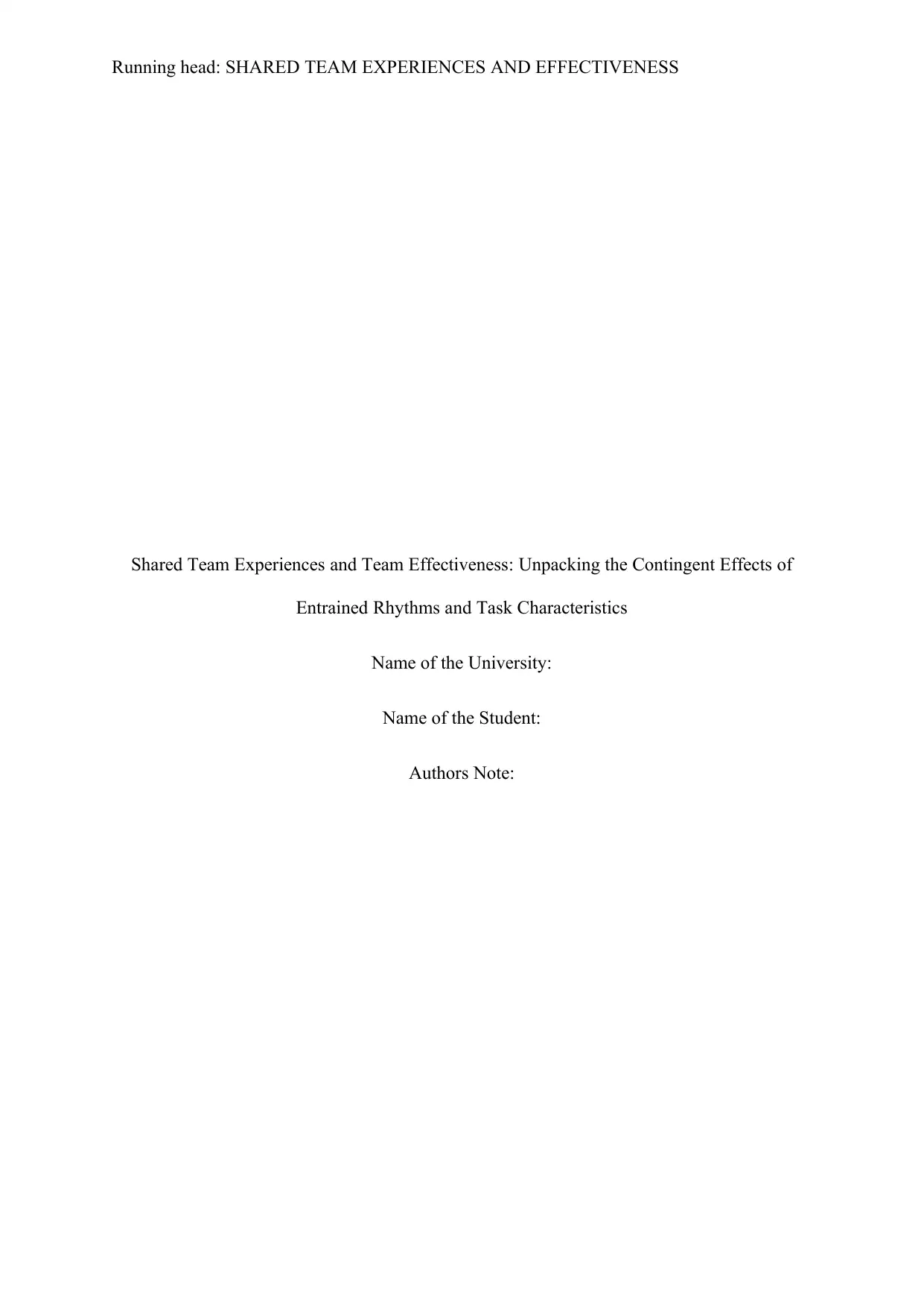
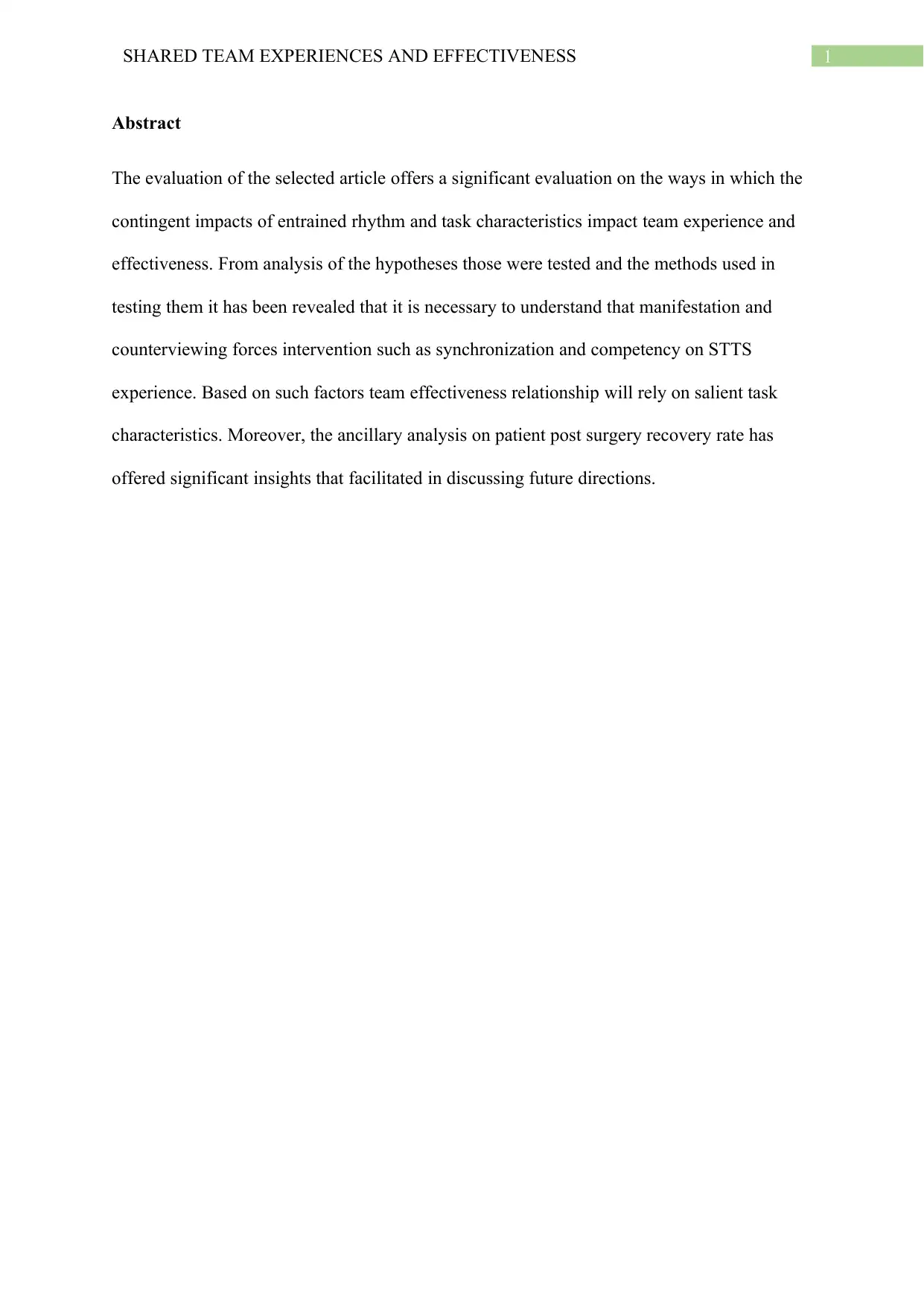
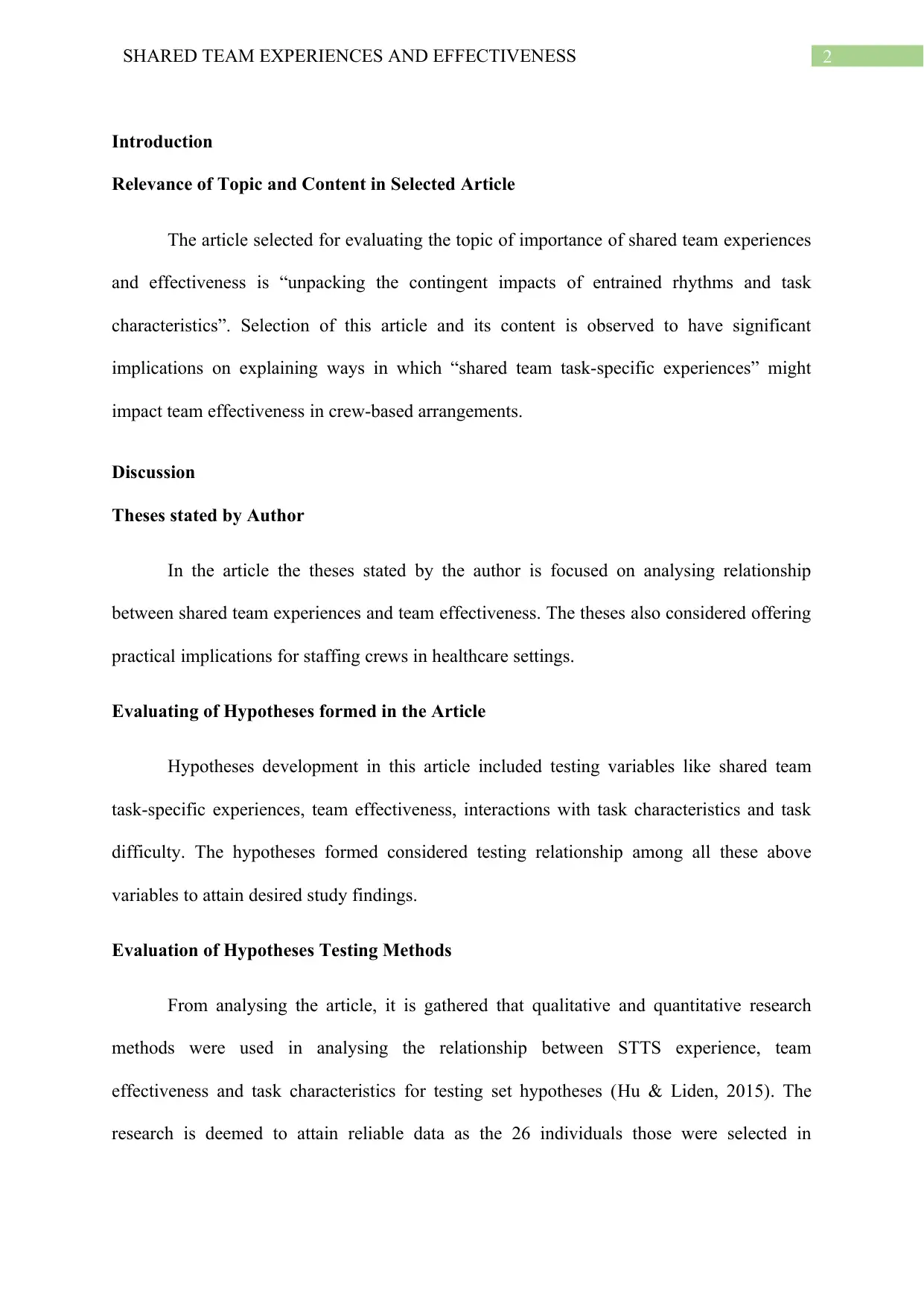

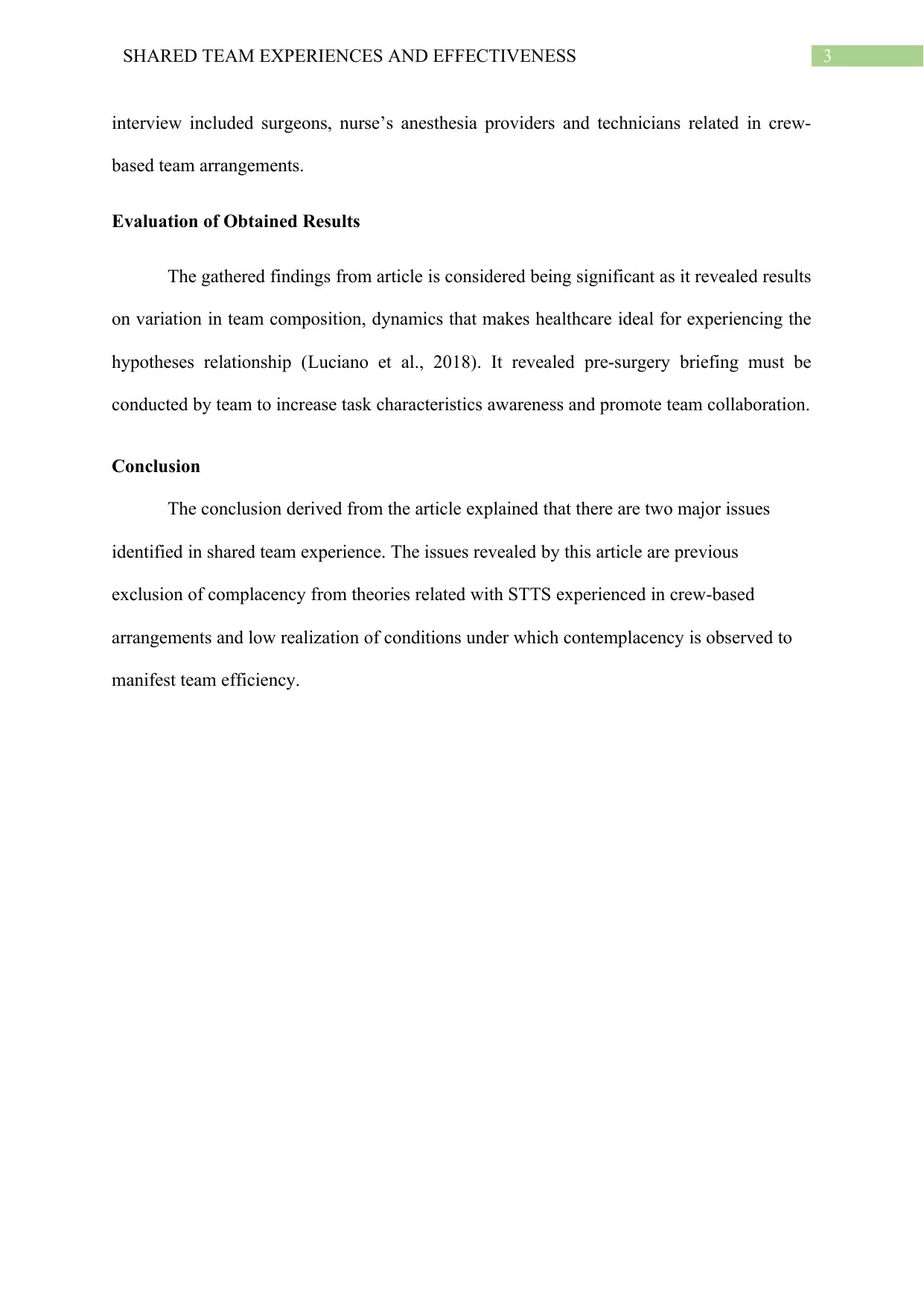
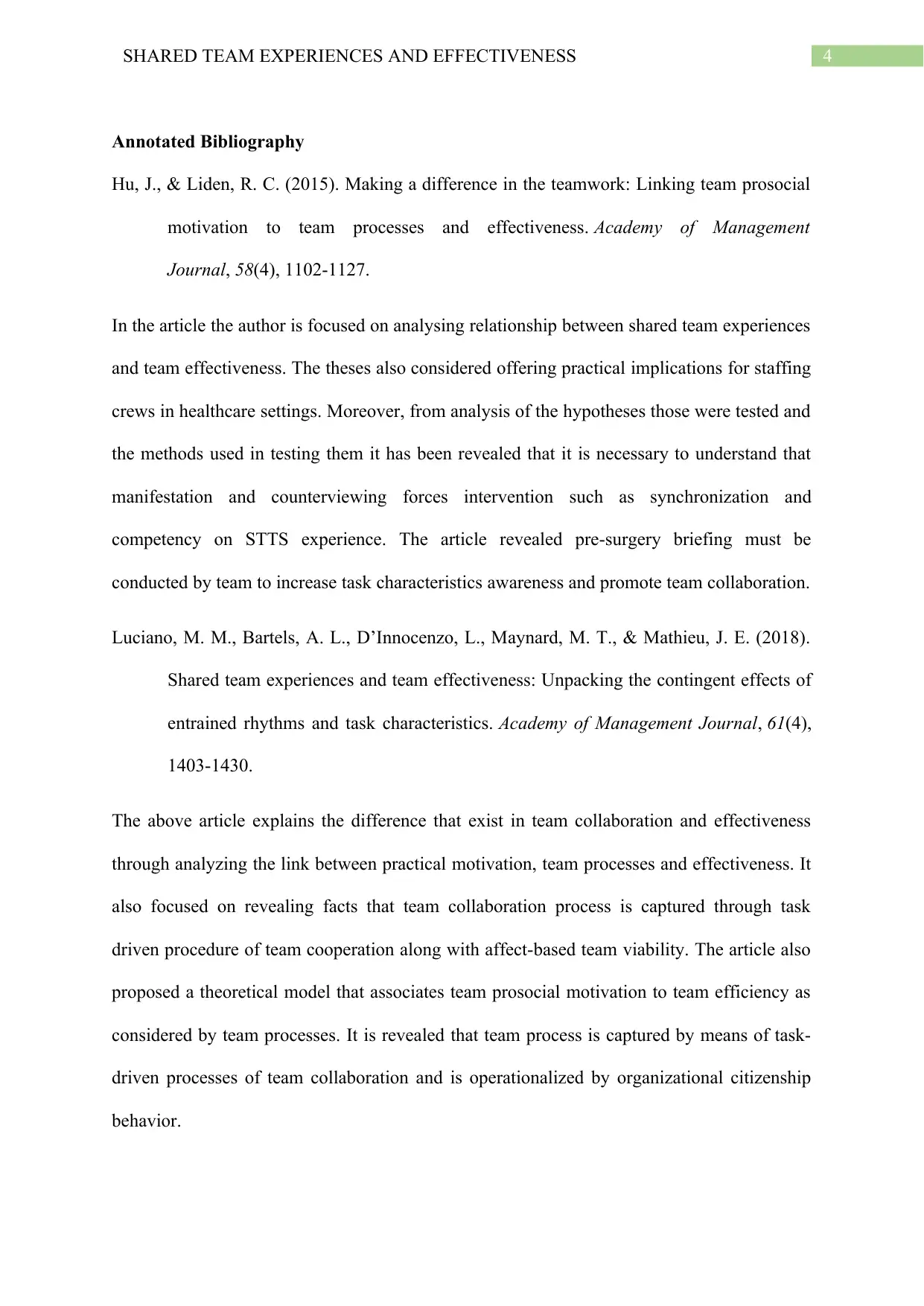

![[object Object]](/_next/static/media/star-bottom.7253800d.svg)